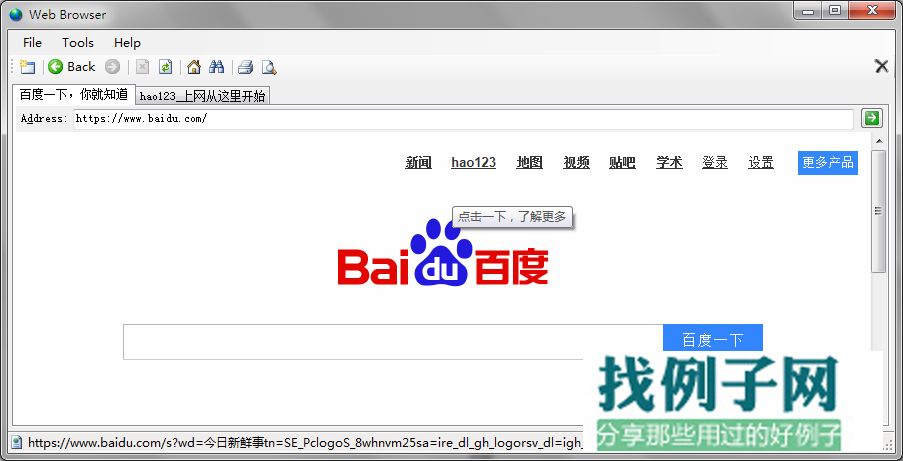C#基于WebBrowser的IE内核浏览器完整实例
using System.Security;
using System.ComponentModel;
using System.Collections.Generic;
using System.Text;
using System.Runtime.InteropServices;
using System.Runtime.InteropServices.ComTypes;
using System.Windows.Forms;
using System.Security.Permissions;
namespace ExtendedWebBrowser2
{
/// <summary>
/// An extended version of the <see cref="WebBrowser"/> control.
/// </summary>
class ExtendedWebBrowser : System.Windows.Forms.WebBrowser
{
private UnsafeNativeMethods.IWebBrowser2 axIWebBrowser2;
/// <summary>
/// This method supports the .NET Framework infrastructure and is not intended to be used directly from your code.
/// Called by the control when the underlying ActiveX control is created.
/// </summary>
/// <param name="nativeActiveXObject"></param>
[PermissionSet(SecurityAction.LinkDemand, Name = "FullTrust")]
protected override void AttachInterfaces(object nativeActiveXObject)
{
this.axIWebBrowser2 = (UnsafeNativeMethods.IWebBrowser2)nativeActiveXObject;
base.AttachInterfaces(nativeActiveXObject);
}
/// <summary>
/// This method supports the .NET Framework infrastructure and is not intended to be used directly from your code.
/// Called by the control when the underlying ActiveX control is discarded.
/// </summary>
[PermissionSet(SecurityAction.LinkDemand, Name = "FullTrust")]
protected override void DetachInterfaces()
{
this.axIWebBrowser2 = null;
base.DetachInterfaces();
}
/// <summary>
/// Returns the automation object for the web browser
/// </summary>
public object Application
{
get { return axIWebBrowser2.Application; }
}
System.Windows.Forms.AxHost.ConnectionPointCookie cookie;
WebBrowserExtendedEvents events; …… (略)



评论